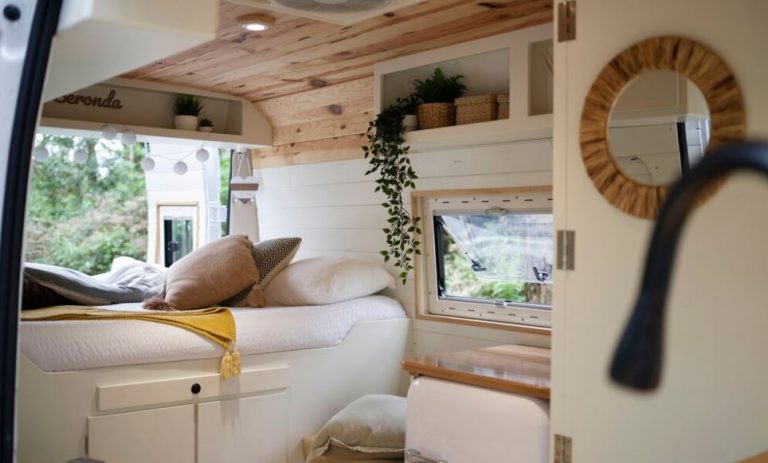Due to a growing desire for independence, sustainability, and customized design, the craft of caravan renovation has evolved from a niche pastime to a cultural phenomenon in recent years. Caravans, which were once thought of as antiquated vacation homes on wheels, are now being astonishingly converted into contemporary offices, minimalist retreats, and even places to make money. With wheels and a desire to travel, it’s a movement remarkably similar to the tiny home boom.
People all over the world are reviving abandoned caravans with layers of care and creativity by adopting a do-it-yourself mentality. In addition to being aesthetically pleasing, these remodeling projects are also remarkably useful, providing mobile solutions that showcase creativity and uniqueness. Today’s caravan interiors are combining freedom, function, and style in incredibly inspiring ways, from off-grid solar systems to repurposed storage.
Caravan Renovation Overview
| Category | Details |
|---|---|
| Topic | Caravan Renovation Ideas |
| Trend Drivers | Sustainability, affordability, travel freedom, personalized design |
| Common Renovation Themes | Retro-modern makeovers, beach house aesthetics, rustic farm vibes, sleek minimalist interiors |
| DIY Upgrade Examples | Painted cabinetry, rattan light fixtures, solar panel installs, under-bed storage, compost toilets |
| Top Contributors | @Peggers, @twocutekelpies, @applesauce, @DIY4Knuckleheds (via Bunnings Workshop and Camplify platforms) |
| Cost Range | £400 to £5,000 (depending on scope and sourcing materials sustainably or secondhand) |
| Main Benefits | Lower accommodation costs, increased mobility, resale or rental income potential |
| Cultural Impact | Promotes circular design economy and celebrates DIY craftsmanship |
From Low-Cost Construction to Bohemian Heaven: What These Changing Makeovers Show
The concept of turning an outdated caravan into a utopian getaway has gained popularity over the last ten years, especially among people who want to live independently. The renovations coming out of these creative communities are incredibly inventive and frequently emotionally impactful, whether they are for an off-grid retreat or a guest suite in the backyard.
Consider the tale of “Minty,” a 1971 Millard that Rob, better known as @Peggers, revived. In just three months, he had a new kitchen installed, new flooring installed, retro tiling added, and the room was turned into a modern-day rolling time capsule. His story is by no means unique; in fact, thousands of people are enjoying the joy that comes from giving the forgotten their charm back.
The Reasons for the Wrenches: Not Just a Visual Rejuvenation
Renovations to caravans are incredibly effective in addressing a variety of lifestyle issues, especially in light of growing housing costs and the normalization of remote work. They provide adaptable substitutes for conventional real estate while also fostering a love of travel and creative fulfillment.
DIY renovators are proving that small spaces can be incredibly versatile by incorporating compact design strategies like gas-lift beds, fold-out tables, and ceiling storage. With desk space and Wi-Fi routers, some have even converted their cars into mobile offices, allowing a new generation of professionals to work literally from anywhere.
In addition to being extremely effective in terms of energy and space utilization, these projects frequently result in lower carbon footprints than fixed-location homes. That’s a victory in a time of conscious consumption.
Tools of the Trade: Real Renovators’ Useful Advice
Purchasing locally and reasonably priced materials, whether from Bunnings DIY hubs or repurposed items from Facebook Marketplace and thrift stores, is one particularly advantageous trend. One of her proudest features, according to community renovator Shelley (@twocutekelpies), was lining the interior of cabinets with vintage newspaper clippings from 1972, a charming homage to the year her caravan was first built.
Karen, another renovator, transformed a 1978 Millard shell into a sleek family area with integrated solar panels, layered lighting, and a full-sized bed, demonstrating that eco-luxury can be surprisingly reasonably priced. What did she advise? For an instant makeover, start with the flooring and paint, then work on the plumbing or wiring.
The constant lesson? The key is preparation. Mock up layouts with masking tape, jot down your ideal design on paper (or Pinterest), and proceed step-by-step. Despite their seemingly magical appearance, these renovations are the result of meticulous, practical labor.
What’s Next: Caravans as Adaptive Living Environments
Caravans are set to gain even more prominence in design culture and urban planning in the upcoming years as more people redefine what home looks like. We anticipate even more inventive use-cases, such as student housing options, mobile studios for artists or therapists, and urban garden offices, as remote work grows and zoning regulations gradually change.
Some cities are even looking into how to include mobile living in their affordable housing plans through green initiatives and strategic alliances with local councils. This makes caravan renovation more than just a fad; it’s a set of tools for resiliency, flexibility, and self-expression.
From Rolling Dreams to Rusty Frames
Renovating a caravan is more than just giving outdated cars a new lease. Redefining what it means to feel at home is the goal. One freshly painted panel at a time, it’s about utilizing your hands to create space, your imagination to create comfort, and your bravery to drive.
The wheels of your next big adventure may already be in your driveway, just needing a little love, a little elbow grease, and a vision worth pursuing. This is true whether you’re sanding down a 1980s Jayco or simply relaxing with a cup of tea and a Pinterest board.


